Debt-Busting on a Dime: Mastering Effective Strategies for Paying Off Debt Without Breaking the Bank
Effective strategies for paying off debt aren’t just for the high rollers and the Wall Street wizards; they’re also for the everyday heroes battling bills on a budget tighter than a hipster’s skinny jeans. Welcome to the financial fiesta where your wallet’s weight—or lack thereof—doesn’t dictate your dance with debt. In this blog post, we’re diving headfirst into a treasure trove of penny-pinching, debt-slaying maneuvers that’ll have you waving goodbye to your financial burdens without needing to win the lottery or invent the next sliced bread.
Now, you might be thinking, “But my piggy bank’s on a diet, and my cash flow’s more like a cash no-go!” Fear not, fiscal friends, for we’ve cooked up a smorgasbord of money-savvy tips that could make even Scrooge McDuck do a double-take. From the mystical arts of budgeting to the secret sauce of side hustles, we’ll explore a labyrinth of ingenious tactics that promise not to bore you into a budgeting snooze-fest.
So, buckle up your seatbelts and prepare to embark on an epic journey through the land of cents and sensibility. Whether you’re a frugal freelancer, a thrifty parent, or just a regular Joe or Jane looking to kick debts to the curb with the elegance of a financially enlightened ninja, this post is your golden ticket. Get ready to chuckle, chortle, and change your fiscal future as we unlock the vault to “Low Income, No Problem: Effective Strategies for Paying Off Debt.”
Debt can be a significant burden on anyone, but it can be particularly challenging for those with a low income. With limited funds, it can be difficult to make even the minimum payments on credit cards, loans, and other debts. However, there are strategies that can help you pay off debt on a low income.
Overview

First, it’s essential to understand your debt and create a budget. Take the time to list out all of your debts, including the interest rates and minimum payments. Then, create a budget that includes all of your expenses, such as rent, utilities, and groceries. This will give you a clear picture of your financial situation and help you determine how much you can realistically put toward debt repayment each month.
Once you have a budget in place, consider ways to increase your income and decrease your expenses. This could include taking on a side job, selling items you no longer need, or cutting back on discretionary spending. Every extra dollar you can put toward debt repayment will help you reach your goal of becoming debt-free.
Understanding Your Financial Situation

When it comes to paying off debt on a low income, the first step is to understand your financial situation. This means taking a close look at your income and expenses to determine how much money you have coming in each month and where it is going.
Assessing Income and Expenses
To begin, we need to assess our income and expenses. Start by making a list of all your sources of income, including your salary, any side hustles, and government benefits. Next, make a list of all your monthly expenses, including necessary expenses like rent, utilities, and groceries, as well as any discretionary spending like eating out or entertainment.
Once you have a clear picture of your income and expenses, you can calculate your monthly net income by subtracting your expenses from your income. This will give you an idea of how much money you have left over each month to put towards paying off debt.
Creating a Realistic Budget
Creating a realistic budget is key to paying off debt on a low income. Look at your monthly expenses and identify areas where you can cut back. This might mean reducing your discretionary spending or finding ways to lower your necessary expenses.
Once you have identified areas where you can cut back, create a budget that reflects your new spending plan. Be sure to include all your necessary expenses and allocate a portion of your net income towards paying off debt. Stick to your budget as closely as possible to ensure you are making progress towards your debt repayment goals.
In conclusion, understanding your financial situation is the first step towards paying off debt on a low income. By assessing your income and expenses and creating a realistic budget, you can take control of your finances and make progress towards becoming debt-free.
Effective Debt Repayment Strategies

When it comes to paying off debt on a low income, it’s important to have a plan in place. Here are two effective strategies to consider:
Debt Snowball vs. Debt Avalanche
The debt snowball method involves paying off your smallest debts first, while making minimum payments on your larger debts. Once the smallest debt is paid off, you move on to the next smallest debt, and so on. This method can be motivating because you see progress quickly, but it may not be the most cost-effective in terms of interest paid.
The debt avalanche method, on the other hand, involves paying off your debts with the highest interest rates first, while making minimum payments on your other debts. This method can save you money on interest in the long run, but it may take longer to see progress and can be less motivating.
Ultimately, the best method for you will depend on your individual circumstances and preferences. Consider your debt amounts, interest rates, and personal motivation when deciding which method to use.
Considering Debt Consolidation
Debt consolidation involves taking out a loan to pay off multiple debts, leaving you with just one monthly payment to make. This can simplify your payments and potentially lower your interest rate, but it’s important to do your research and make sure you’re getting a good deal.
If you’re considering debt consolidation, look for a loan with a lower interest rate than your current debts, and make sure to factor in any fees or charges associated with the loan. It’s also important to make a plan to avoid taking on new debt while you’re paying off your consolidated loan.
Overall, the key to effective debt repayment is to have a plan in place and stick to it. Whether you choose the debt snowball or debt avalanche method, or consider debt consolidation, make sure to prioritize your debt repayment and stay committed to your goals.
Increasing Income and Reducing Expenses

When it comes to paying off debt on a low income, we need to find ways to increase our income and reduce our expenses. Here are a couple of strategies that can help us achieve this goal:
Exploring Side Hustles
One way to increase our income is to explore side hustles. A side hustle is any job or gig that we can do on the side, in addition to our regular job. Some examples of side hustles include freelance writing, pet-sitting, or driving for a ride-sharing service.
To find a side hustle, we can start by looking at our skills and interests. For example, if we are good at graphic design, we can offer our services on freelance websites. If we love animals, we can offer pet-sitting services to our friends and family.
Another way to find side hustles is to look for opportunities in our local community. We can check job boards, classified ads, and social media groups to see if anyone is looking for help with odd jobs or projects.
Minimizing Monthly Bills
Another way to reduce our expenses is to minimize our monthly bills. This can involve cutting back on unnecessary expenses, negotiating with service providers, and finding ways to save money on everyday purchases.
To start, we can take a look at our monthly bills and identify any services that we don’t really need. For example, if we rarely watch cable TV, we can cancel our subscription and save money on our monthly bill.
We can also negotiate with our service providers to see if we can get a better deal. For example, we can call our internet provider and ask if they have any promotions or discounts available.
Finally, we can find ways to save money on everyday purchases by shopping around for deals and using coupons. We can also look for ways to reduce our energy consumption, such as turning off lights when we leave a room or using energy-efficient appliances.
By exploring side hustles and minimizing our monthly bills, we can increase our income and reduce our expenses, which can help us pay off our debt faster.
Negotiating with Creditors

When dealing with debt on a low income, negotiating with creditors can be a crucial step in finding a manageable solution. Here are some strategies that can help:
Debt Settlement and Relief Options
One option to consider is debt settlement. This involves negotiating with your creditors to settle your debt for less than the full amount owed. Debt settlement can be a good option if you have a large amount of debt that you cannot pay off on your own.
Another option to consider is debt relief. This involves working with a debt relief company to negotiate with your creditors on your behalf. Debt relief companies can help you negotiate lower interest rates, waive fees, and consolidate your debt into one manageable payment.
Improving Credit Terms
Negotiating with your creditors can also help you improve your credit terms. For example, you can negotiate with your creditors to lower your interest rate or extend your payment terms. This can help you reduce your monthly payments and free up more money to pay off your debt.
When negotiating with your creditors, it’s important to be clear and confident in your communication. Be sure to explain your financial situation and why you’re struggling to make your payments. You can also ask for a payment plan that works with your budget.
In conclusion, negotiating with creditors can be a helpful strategy when paying off debt on a low income. By exploring debt settlement and relief options and improving your credit terms, you can find a solution that works for you.
Long-Term Financial Health

As we work towards paying off debt on a low income, it’s important to also focus on our long-term financial health. This means building an emergency fund and setting and achieving financial goals.
Building an Emergency Fund
One of the most important steps we can take towards long-term financial health is building an emergency fund. This fund should ideally cover 3-6 months of living expenses and be easily accessible in case of an unexpected expense or loss of income.
To build this fund, we can start by setting aside a small amount each month, even if it’s just $10 or $20. We can also look for ways to cut expenses and redirect that money towards our emergency fund. For example, we can cut back on eating out or cancel unnecessary subscriptions.
Setting and Achieving Financial Goals
In addition to building an emergency fund, setting and achieving financial goals can help us achieve long-term financial health. These goals can include paying off debt faster, saving for a down payment on a home, or investing for retirement.
To set these goals, we can start by identifying what’s important to us and what we want to achieve financially. We can then break these goals down into smaller, achievable steps and create a plan to reach them.
For example, if our goal is to pay off debt faster, we can start by creating a budget and allocating extra funds towards debt repayment each month. We can also look for ways to increase our income, such as taking on a side job or negotiating a raise at work.
By focusing on both short-term debt repayment and long-term financial health, we can create a solid foundation for our financial future.
Frequently Asked Questions

What are the most effective methods for managing credit card debt on a limited budget?
If you have credit card debt, the best way to manage it is by making consistent payments. You can start by paying off the card with the highest interest rate first, or by paying off the card with the smallest balance first, also known as the snowball method. You can also try negotiating with your credit card company to lower your interest rate or create a payment plan that works for you.
How does the snowball strategy work for paying off debts, and is it suitable for those with a small income?
The snowball strategy involves paying off the smallest debt first, then moving on to the next smallest debt, and so on. This method can be effective for those with a small income because it provides a sense of accomplishment and progress. It is important to note that the snowball strategy may not be the best method for everyone, as it may not be the most cost-effective approach.
What steps should I take if I’m unable to meet the minimum debt payments?
If you’re unable to meet the minimum debt payments, the first step is to contact your creditor and explain your situation. They may be able to work with you to create a payment plan or offer other assistance. You can also seek the help of a credit counseling agency or financial advisor to help you develop a plan to get back on track.
Is there a systematic approach to eliminating debt for people who are living paycheck to paycheck?
Yes, there are several systematic approaches to eliminating debt for those living paycheck to paycheck. One common method is the debt avalanche, which involves paying off the debt with the highest interest rate first, and then moving on to the next highest interest rate debt. Another method is the debt snowball, which involves paying off the smallest debt first, then moving on to the next smallest debt, and so on. It’s important to find a method that works for you and stick to it consistently.
Final Thoughts on Effective Strategies for Paying Off Debt
And there you have it, the grand finale of our debt-defying escapades! You’ve waltzed through the world of “Low Income, No Problem: Effective Strategies for Paying Off Debt,” and if you’ve been playing along at home, your debt might just be quivering in its boots. We’ve navigated the nooks and crannies of frugality, tiptoed through the tightrope of thrift, and emerged with wallets intact and spirits high.
As we draw the curtain on this financial fable, remember that Rome wasn’t built in a day, and neither is a debt-free life. But with each small step—a budget tweak here, a side hustle there—you’re constructing your own empire of economic stability. So, don your debt-slaying armor and charge into battle with the confidence of a cash-conscious crusader.
Before you click away, armed with knowledge and ready to conquer your creditors, take a moment to share this treasure trove of tips with your fellow penny pinchers and dollar stretchers. Spread the wealth of wisdom, and let’s create a community of debt-defeating dynamos.
Until our next money-minded meetup, keep your expenses low, your spirits high, and your financial goals within reach. Because when it comes to effective strategies for paying off debt, you’re not just a reader—you’re a doer, a dreamer, and a soon-to-be debt-ditching superstar. Keep the change, folks!







































